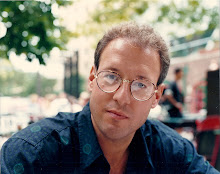 Over at LinkedIn.com I've been tracking an interesting discussion on the use of images in market research among members (myself included) of the Next Generation Market Research Group started by Ricardo Lopez, President of Hispanic Research, Inc. We've confronted the use of images in research since 1953 finding that whenever you use images you tend to cement images and emotions in place rather than promote discussion beyond those bounds and any advertising agency would agree; and so we switched to "written" creative and stimulative materials finding that they better enabled the respondent's mind to wonder/wander, the way reading a good book forces you to use your imagination and imagine a scene based on individual perceptions and frames of reference to discuss rather than have it presented as a done deal long ago. And with better business building results.
Over at LinkedIn.com I've been tracking an interesting discussion on the use of images in market research among members (myself included) of the Next Generation Market Research Group started by Ricardo Lopez, President of Hispanic Research, Inc. We've confronted the use of images in research since 1953 finding that whenever you use images you tend to cement images and emotions in place rather than promote discussion beyond those bounds and any advertising agency would agree; and so we switched to "written" creative and stimulative materials finding that they better enabled the respondent's mind to wonder/wander, the way reading a good book forces you to use your imagination and imagine a scene based on individual perceptions and frames of reference to discuss rather than have it presented as a done deal long ago. And with better business building results.But what is the risk of using images to present ideas? Both Washington Mutual Bank (once the biggest bank west of the Rockies) and Kahn's/Hillshire Farms presented images to respondents to get a bead on how to present their brands to consumers. Both WAMU and Kahn's/Hillshire Farms showed people pictures of farmers dressed in blue jeans and flannel shirts, and scientists dressed in stached shirts and lab coats. There were a range of other images. Obviously, being based in Seattle with lots of rain, forest and hippies, WAMU was perceived to be the "friendly" bank while arch rivals Bank of America and Wells Fargo were perceived to be "those evil starched shirt corporate guys not to be trusted." Similarly, Kahn's/Hillshire Farms products were percieved to be made by honest "farmers" while Swift-Eckrich products were percieved "made and processed" by corporate food scientists in stainless steel by men wearing starched white lab coats." So which image is more appealing? And is this really insight? I think not.
Using this data, though accurate, did not move either business ahead. For friendly WAMU and Kahn's/Hillshire Farms; neither grew their customer base, sustain growth nor were they any more effective at retaining customers. That usually happens when you show people what they want to see. The wisdom of crowds it is not. WAMU got bought out by evil Chase due to its inability to weather a financial crisis and Kahns/Hillshire Farm was sold to the evil white coat guys - erasing all the research time, money and advertising spent on work that went down the drain. What a waste of career time.
Anyway, why does the practice of using images in research persist? And why do academics promote such? Because pictures in research promote what people in the medical community (doctors) call "SEARCH SATISFACTION." A condition where the care or answer givers simply stop looking for better answers when they find one that "works." So should images really be a part of Next Generation Market Research? Well?











3 comments:
Hi Martin
could you please give me the link to that NGMR discussion?
Thank you.
Try this:
http://www.linkedin.com/groupAnswers?viewQuestionAndAnswers=&gid=2209925&discussionID=6270071&sik=1253598212829&trk=ug_qa_q&goback=%2Eana_2209925_1253598212829_3_1
Talk later.
I totally agree with this article. Use of images in reasearch is risky. I rather use "visionning exercices" to address coporate image issues. Let people define their own "images"
Pierre Gauthier
http://www.qualitative-research-canada.com/
Post a Comment